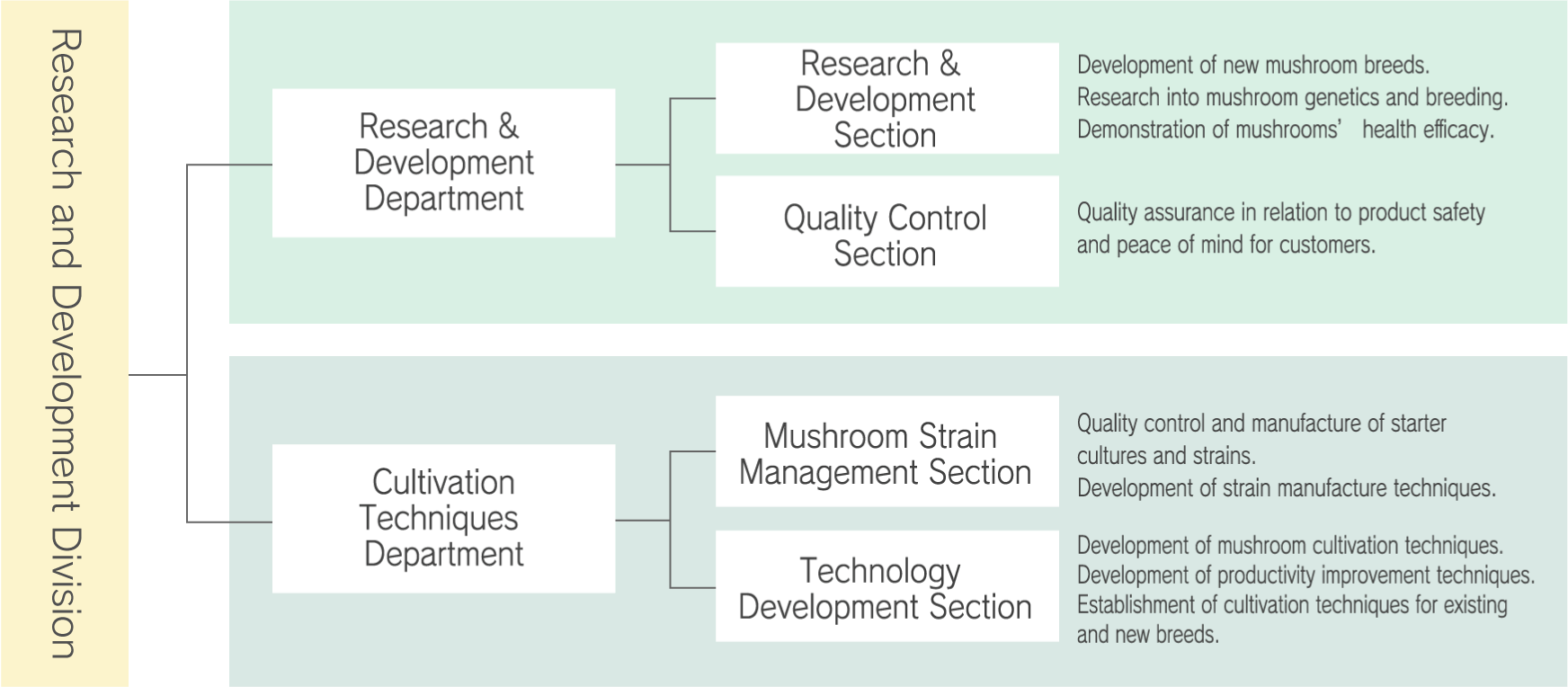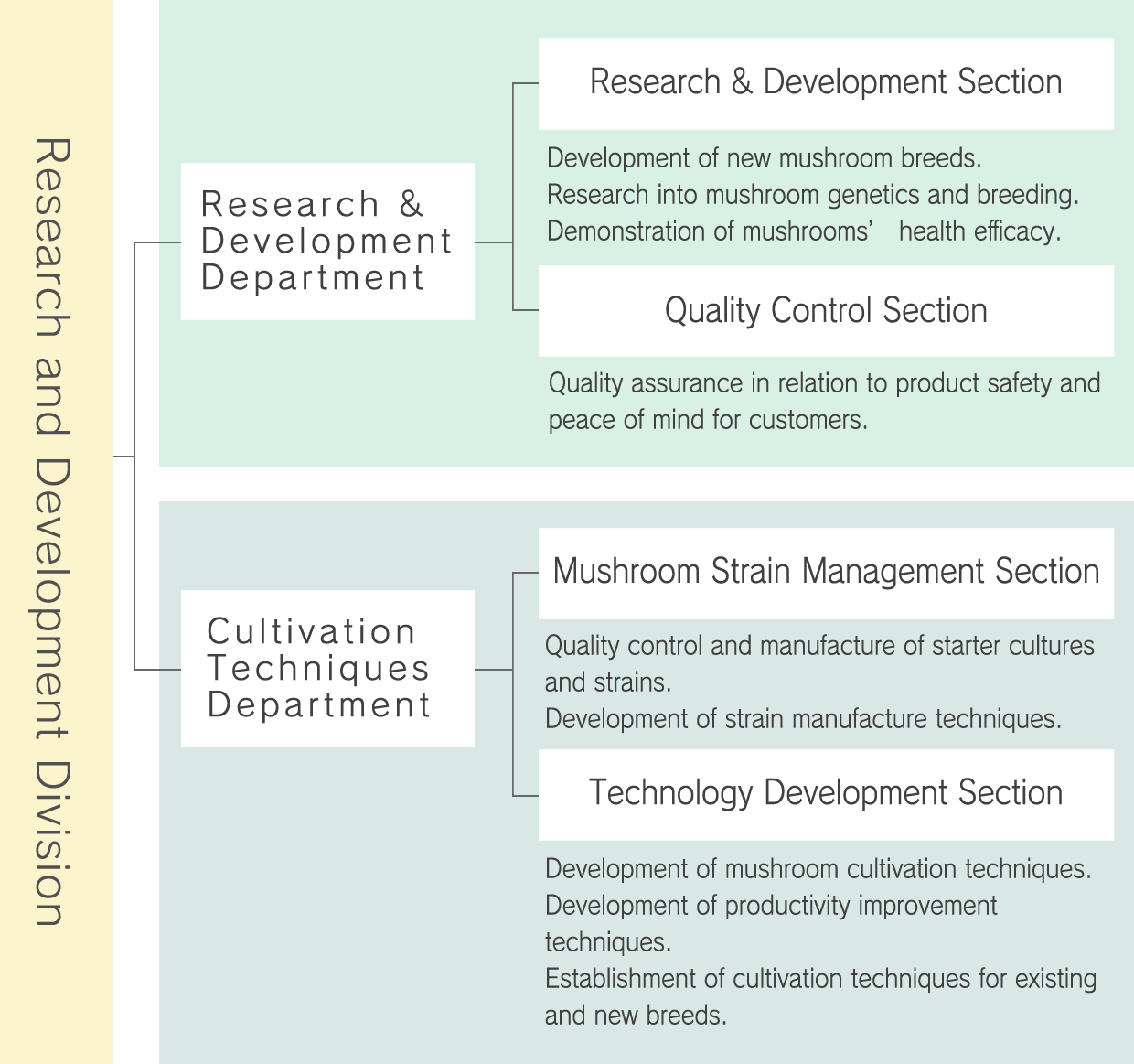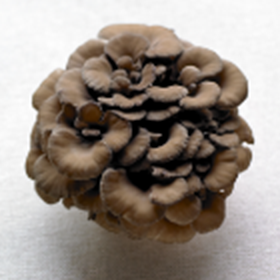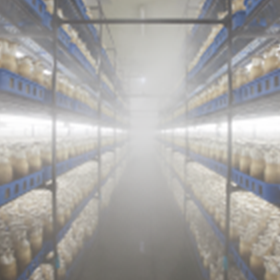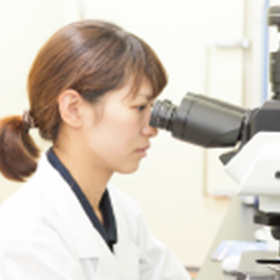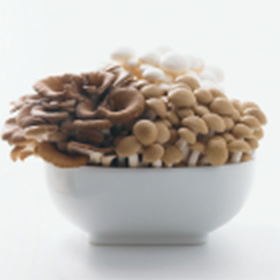Development of cultivation techniques for new mushroom breeds
The research and development of mushrooms forms a core branch of Hokuto’s business. Since its establishment in 1983, the Mushroom General Research Institute has performed comprehensive mushroom-related research, such as the development of new breeds and new cultivation materials and techniques, utilizing biotechnology. In 1986, Hokuto became the first in the world to develop pure white enokitake.
Thereafter Hokuto has continued to deliver results in great numbers, such as the development of low-bitterness bunashimeji and the enabling of large quantity, stable eryngii production. Even after the commencement of new breed distribution, the pursuit of breeds with improved flavor and superior color and shape never ends. Thus, many breeds born from our untiring spirit of study are registered with the Ministry of Agriculture, Forestry and Fisheries, and we continue to acquire intellectual property rights such as patents for our newly developed techniques.
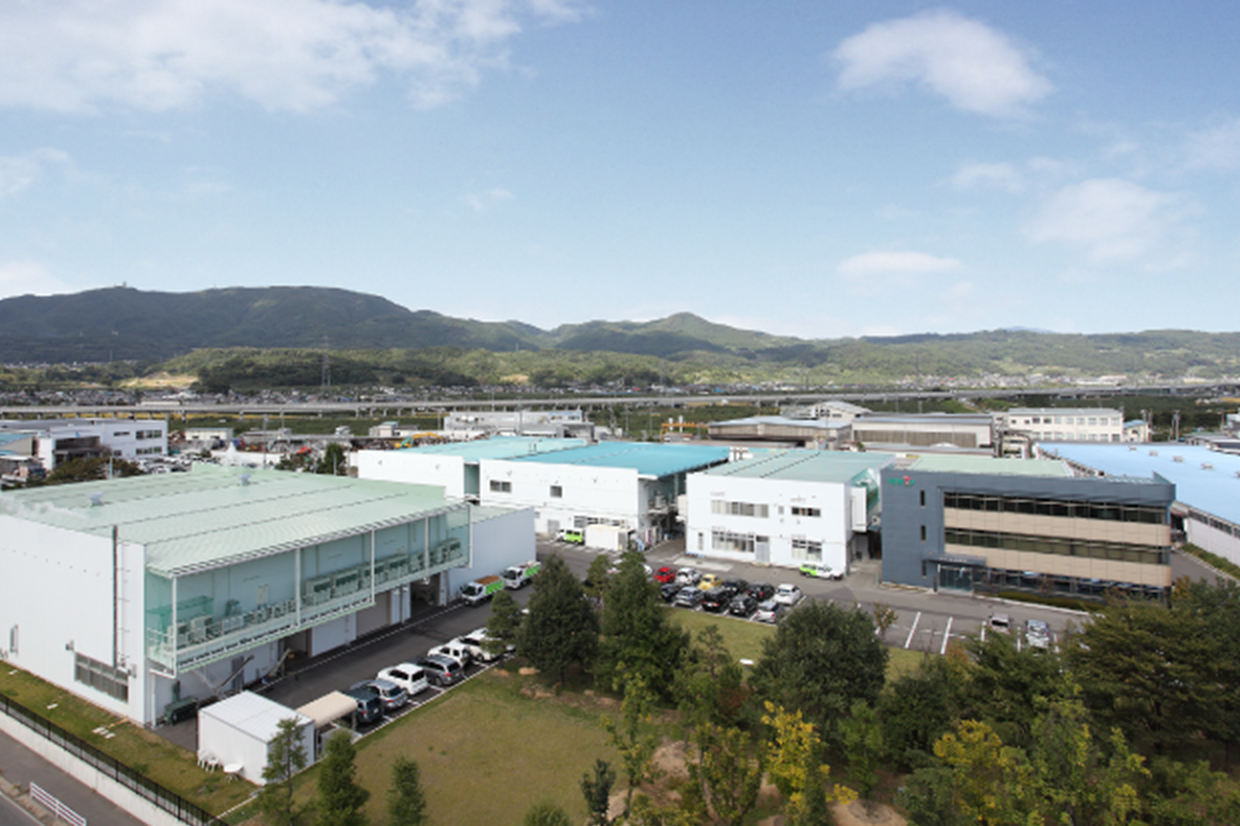

Pursuing mushrooms’ medicinal effects and functionality, with “health” as the keyword
At the Mushroom General Research Institute we are working to scientifically clarify mushrooms’ medicinal effects, carrying out research helpful for health maintenance and promotion. So far we have confirmed several bioactive functions, such as eryngii’s preventative effect against liver disorders, bunapi’s function of controlling arteriosclerosis, and maitake’s anti-allergy effect. Research into agaricus’ function as a cancer inhibitor is also progressing.
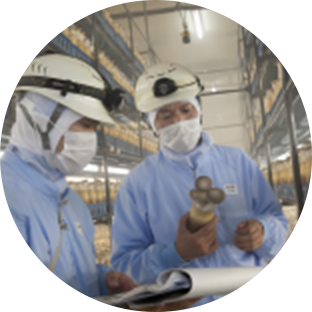
Mushroom Biotechnology
Gene-recombination is not performed during Hokuto’s mushroom breed development. We use traditional crossbreeding methods to develop superior new breeds. The search for superior parent strains to be used as genetic resources is particularly important, thus mushroom exploration is conducted throughout Japan. Superior new breeds are produced as a result of extensive cultivation experiments based on mushrooms gathered from the wild.
Research & Development Structure
